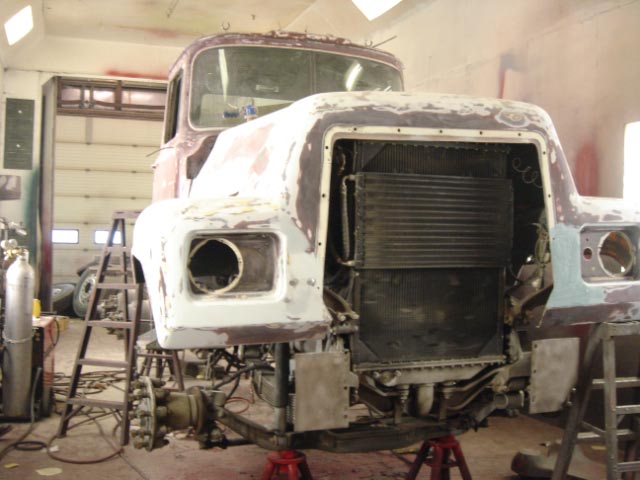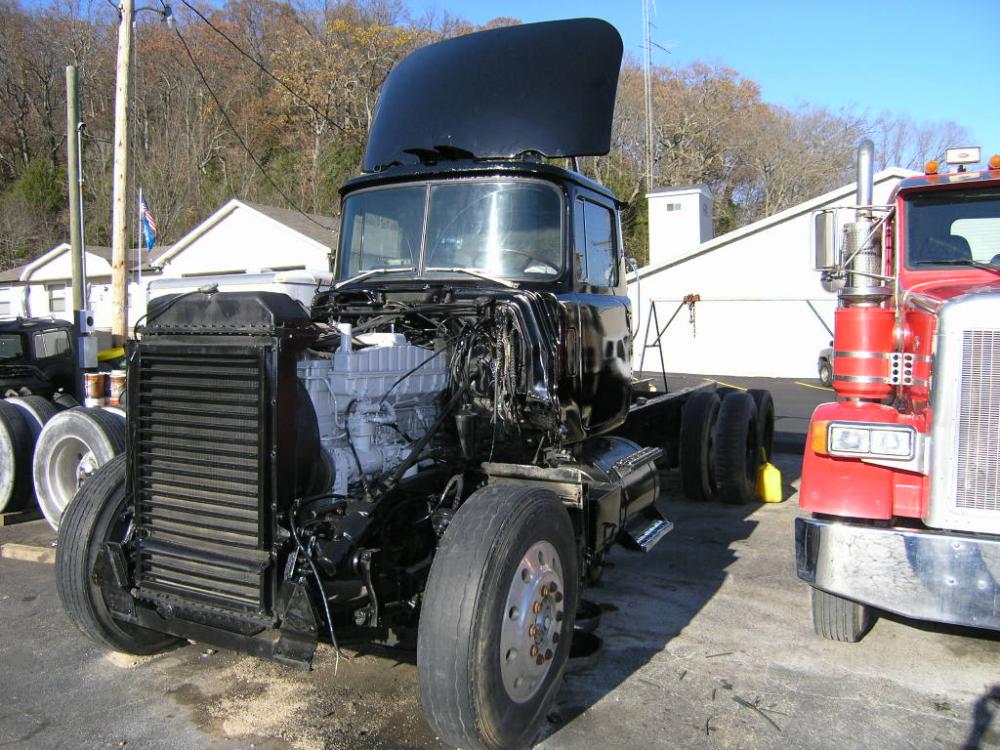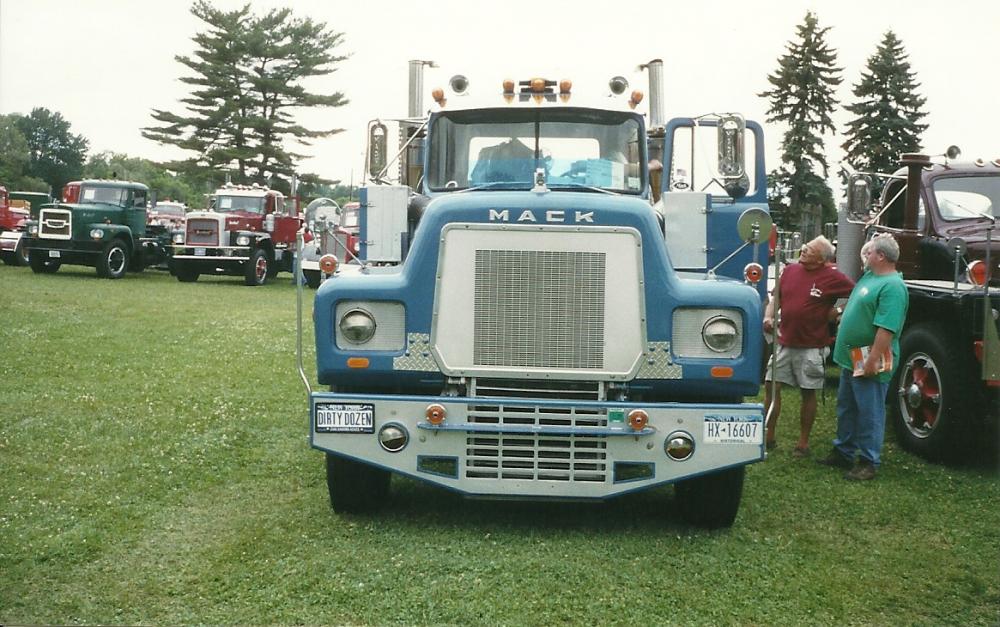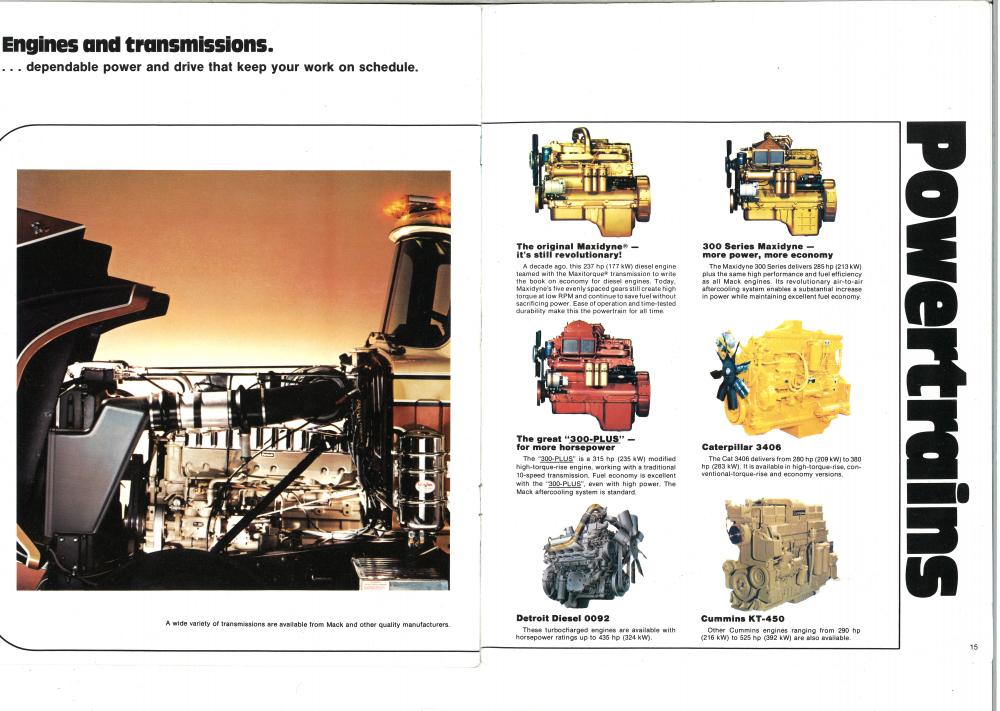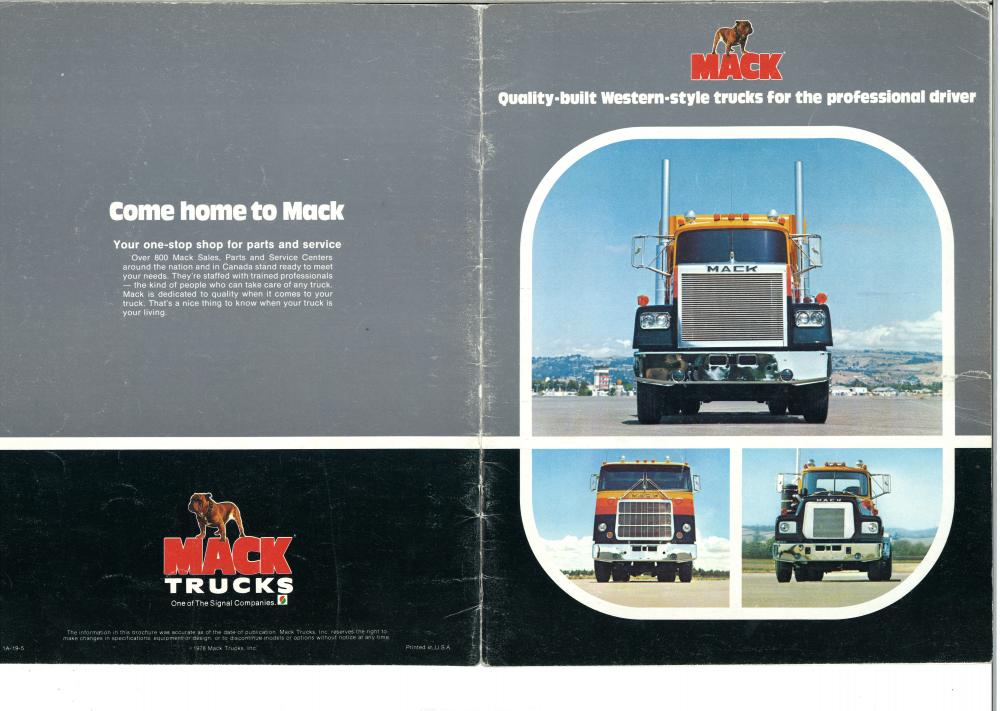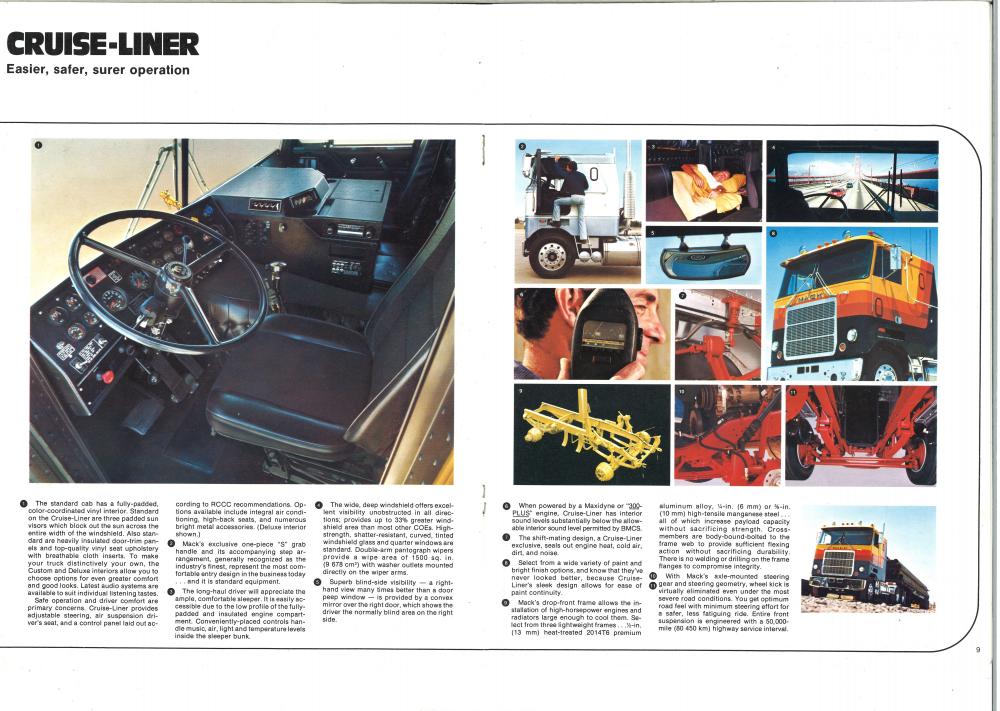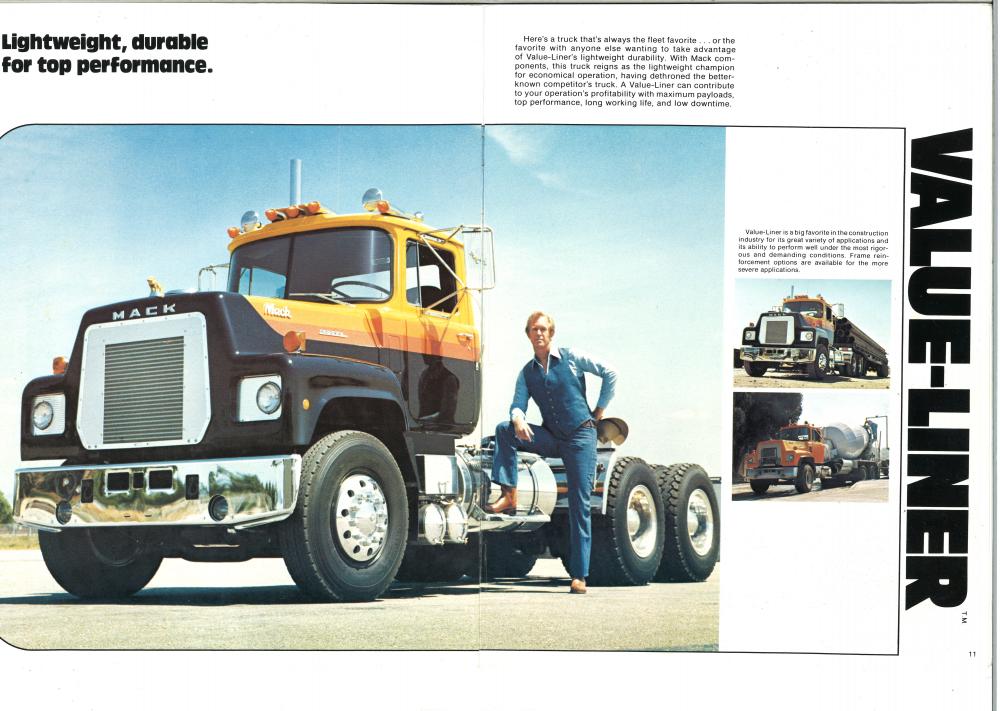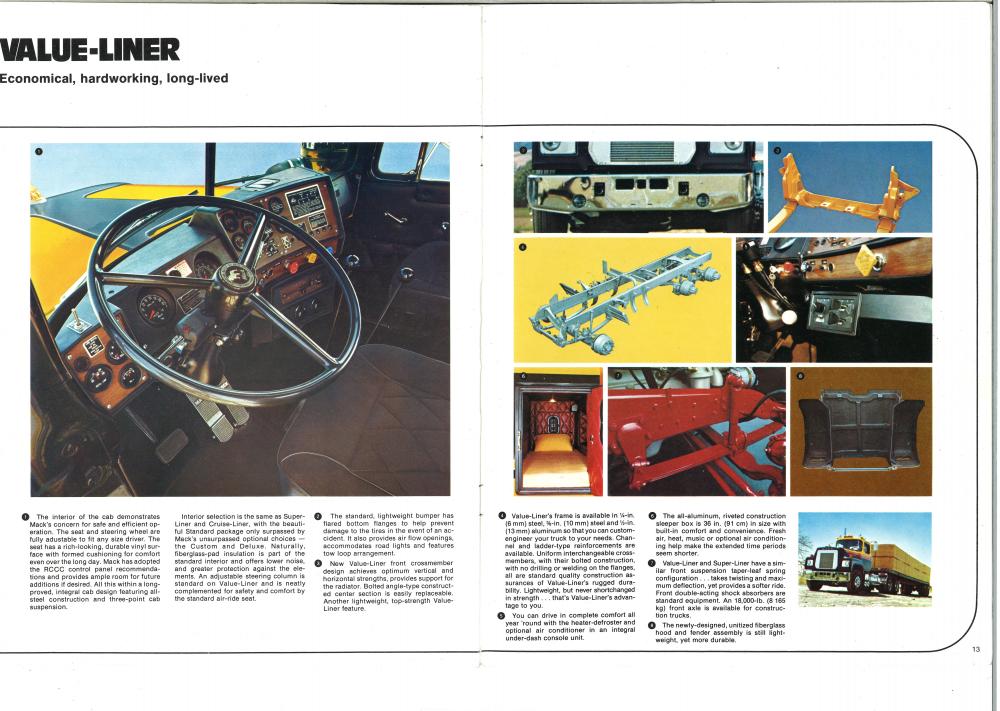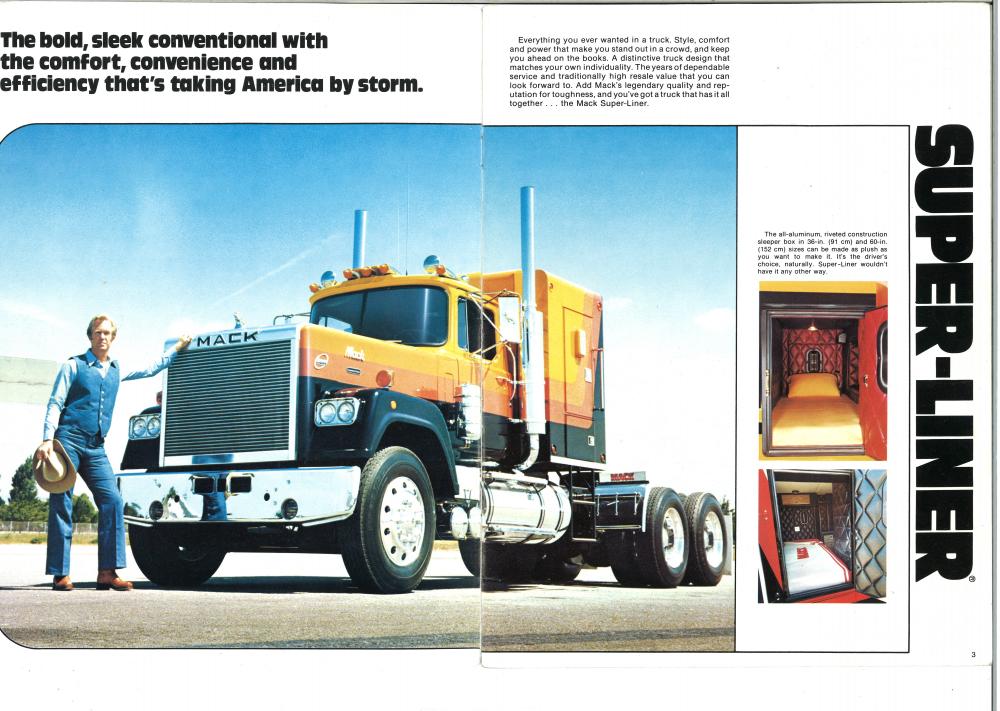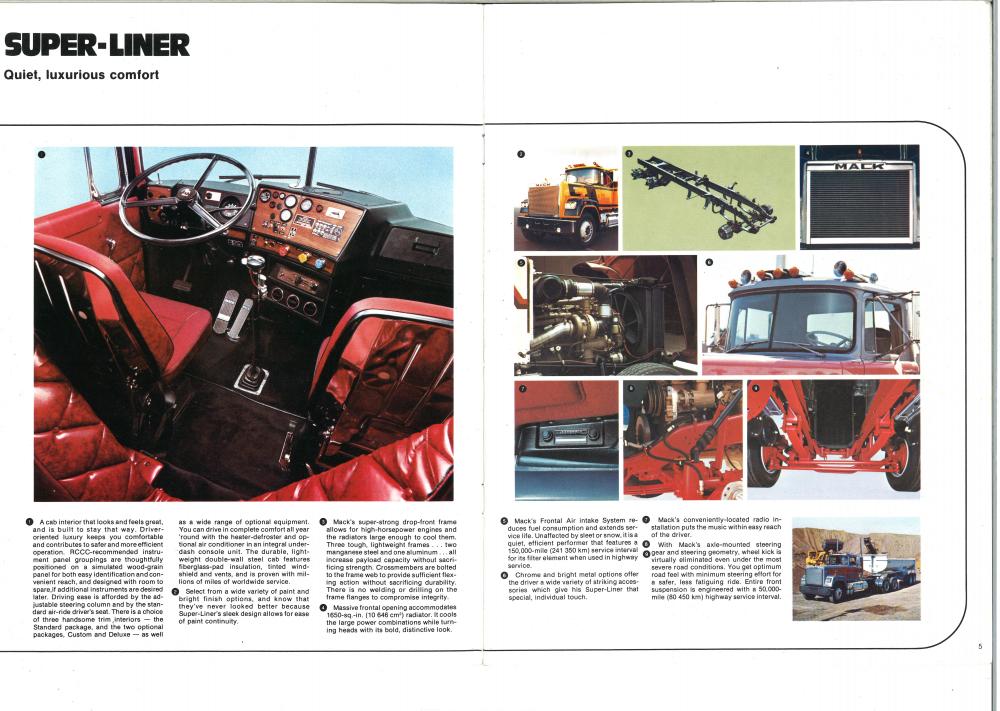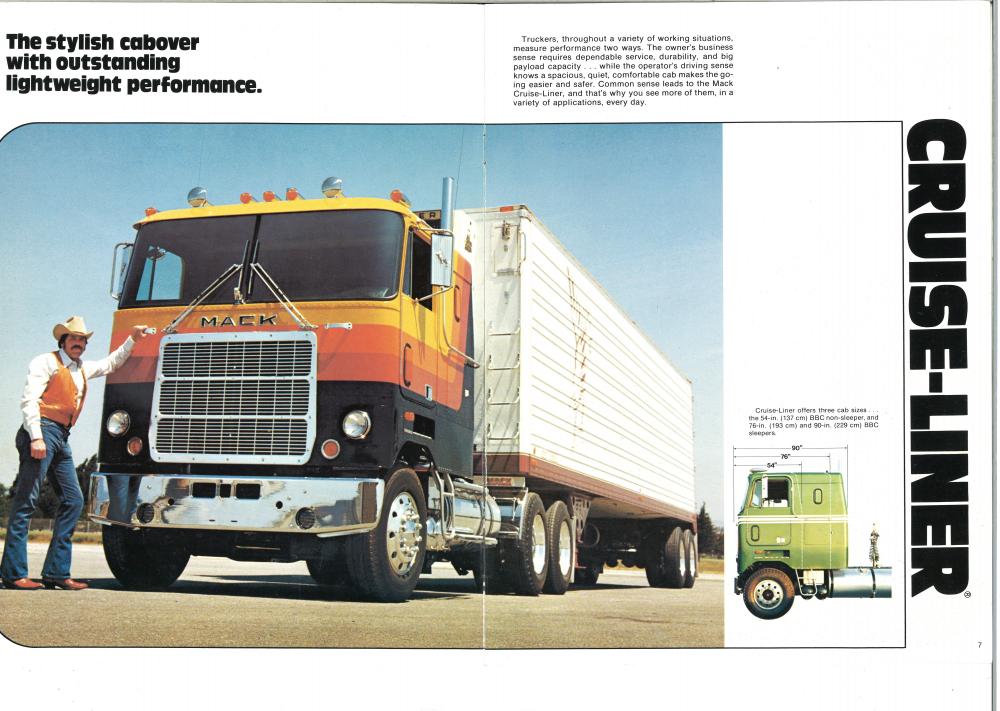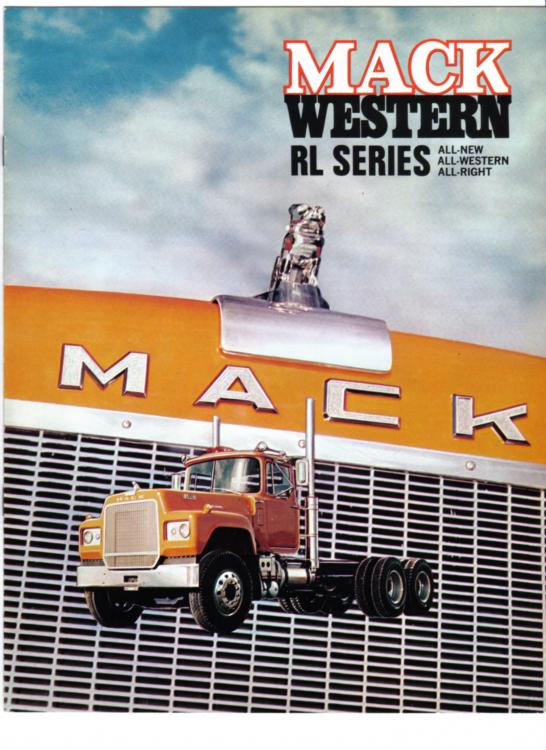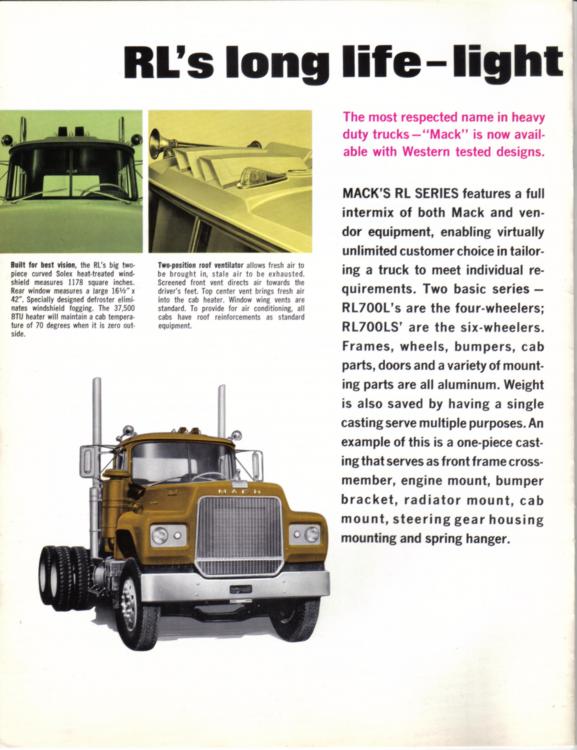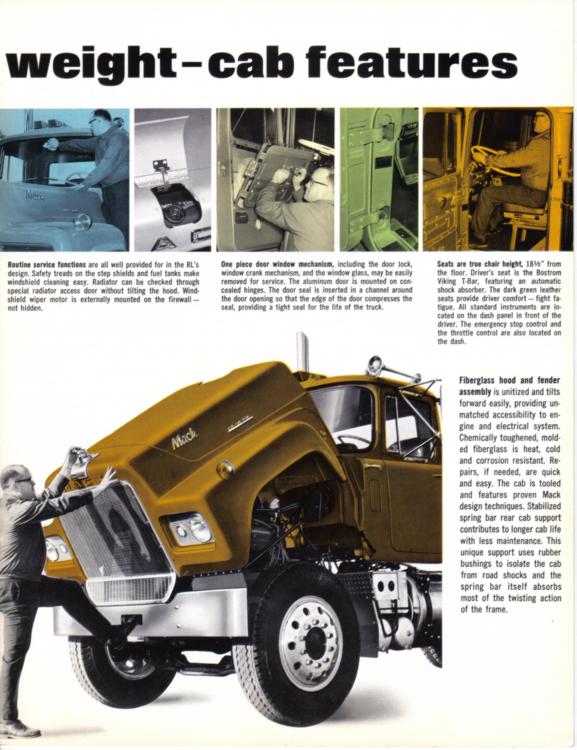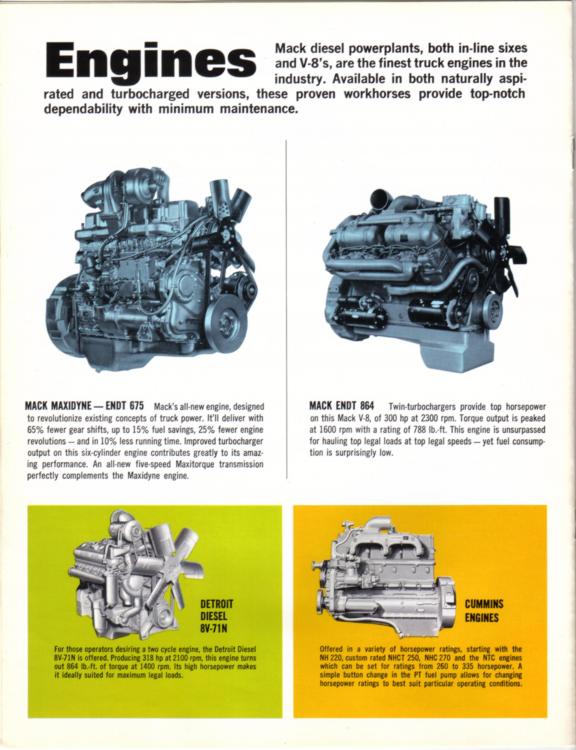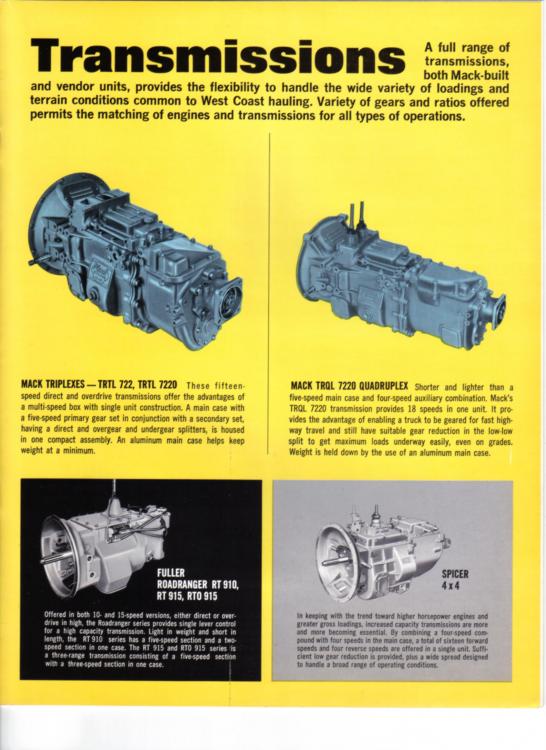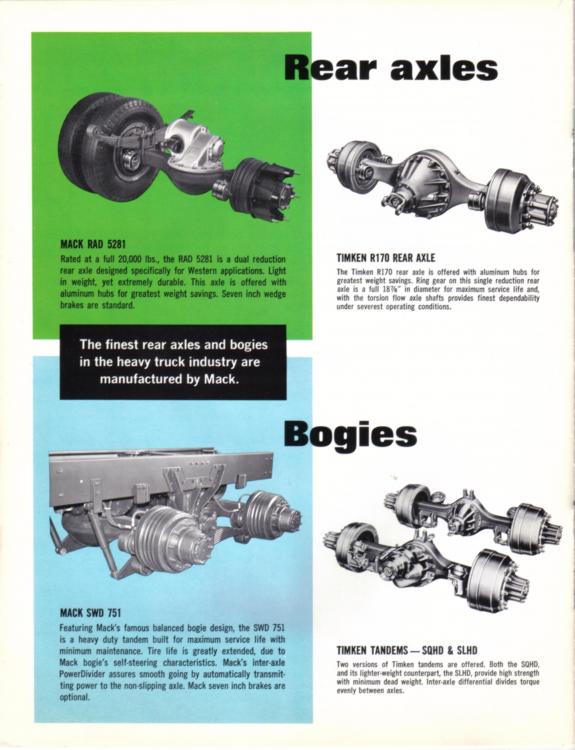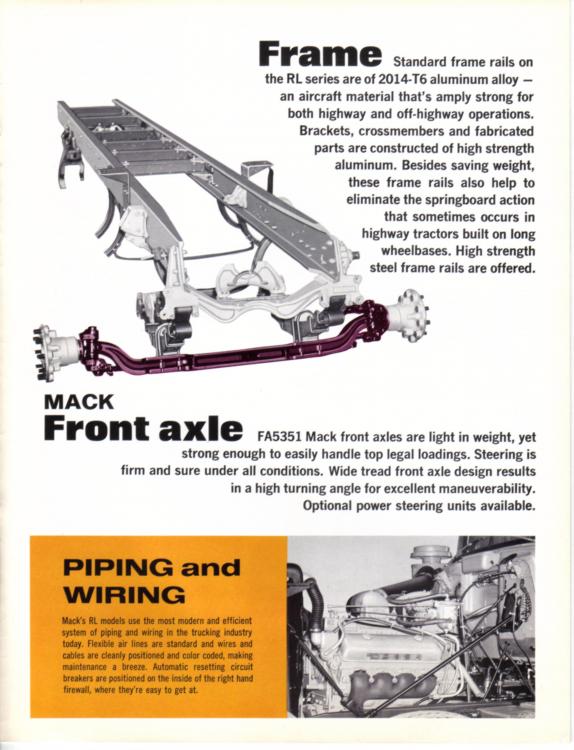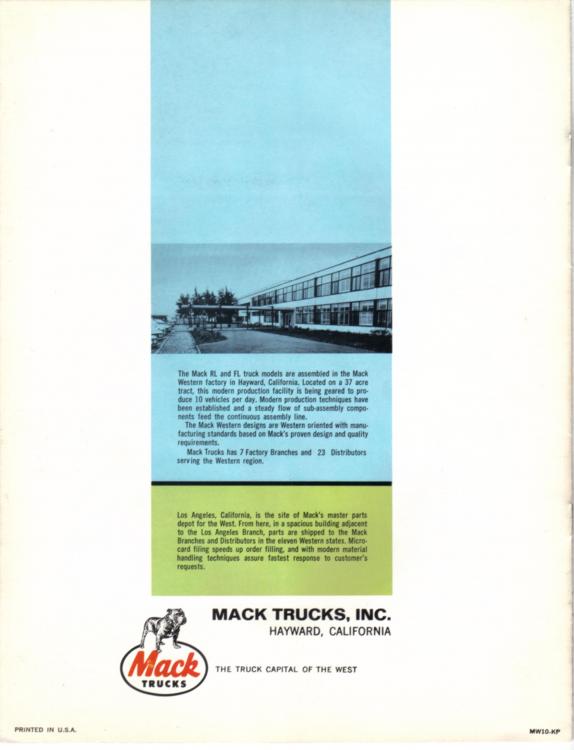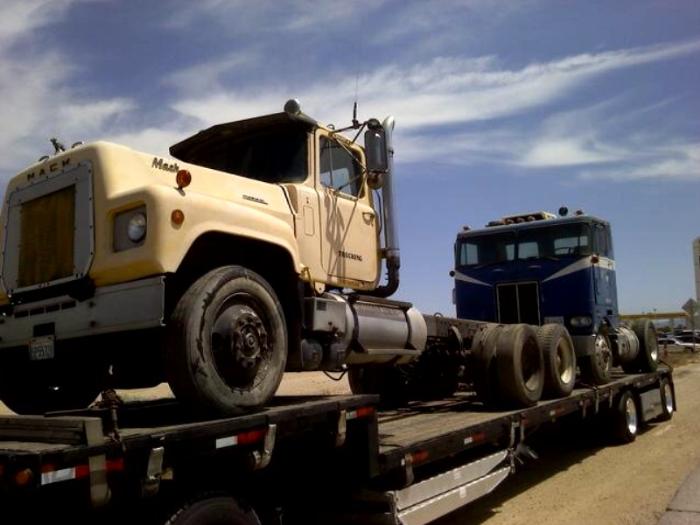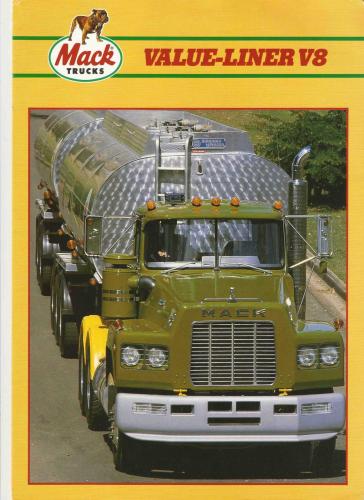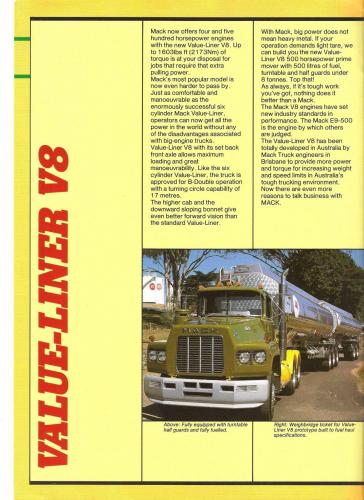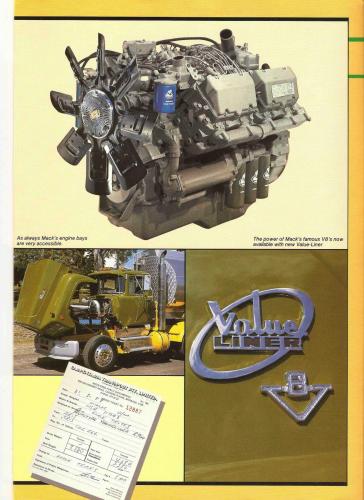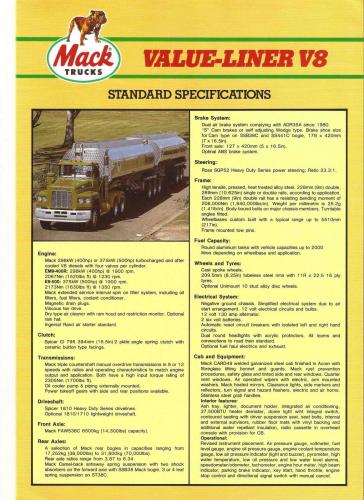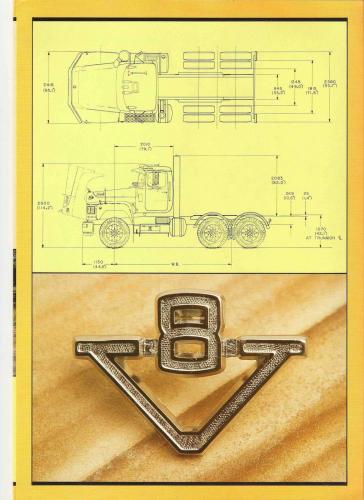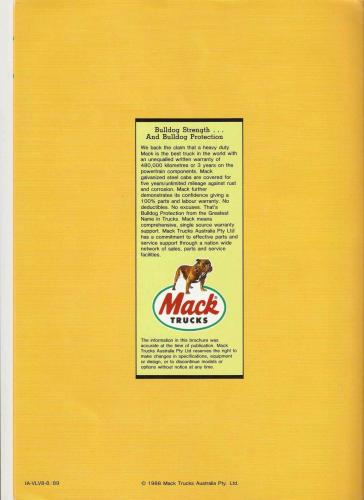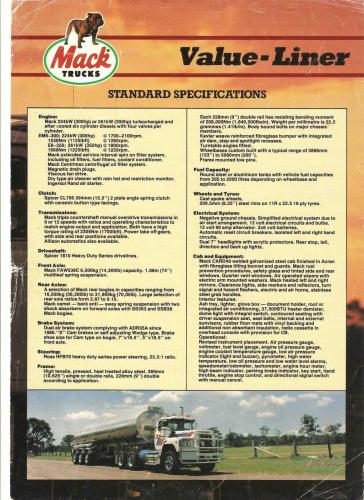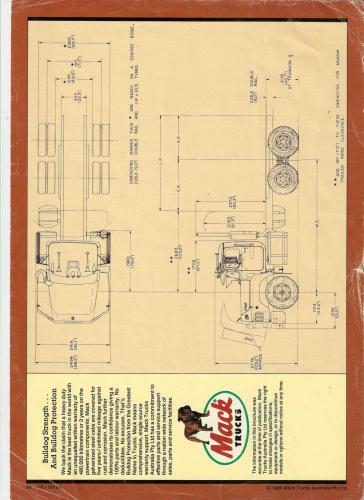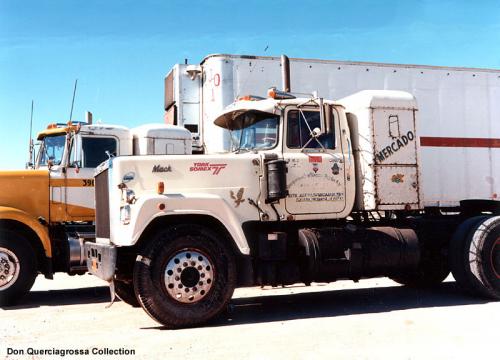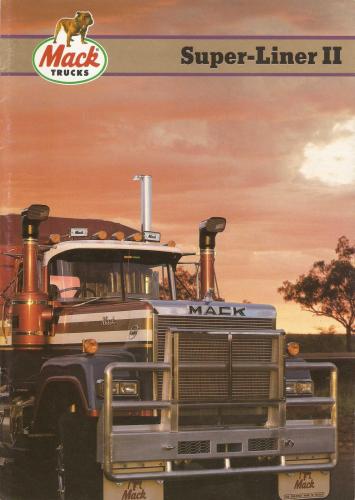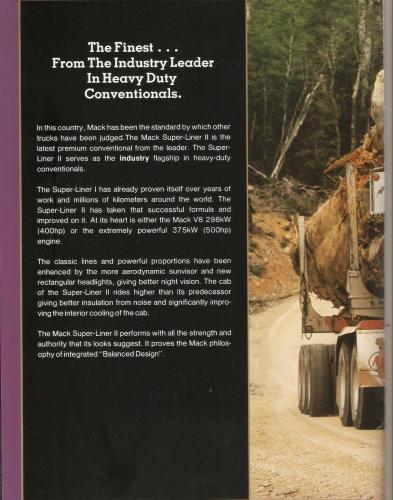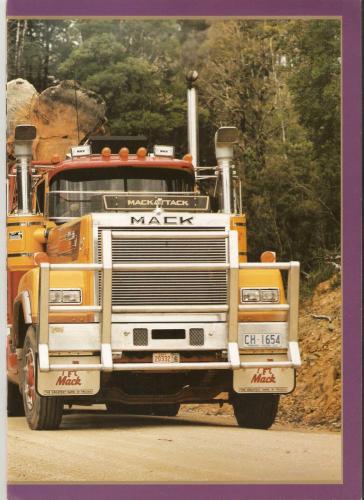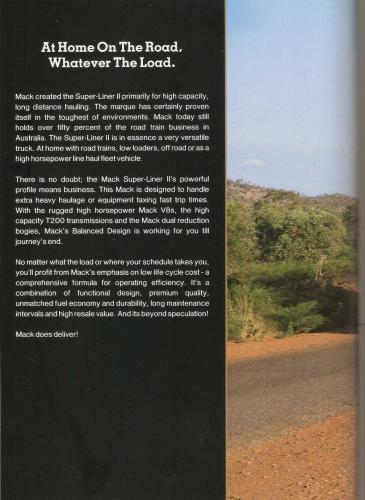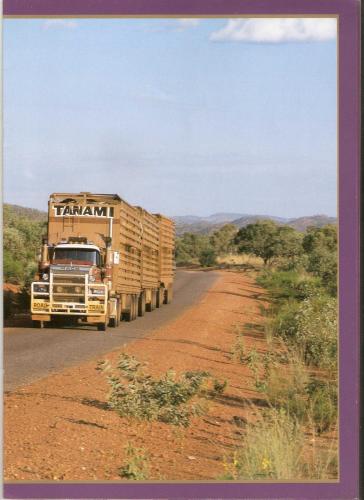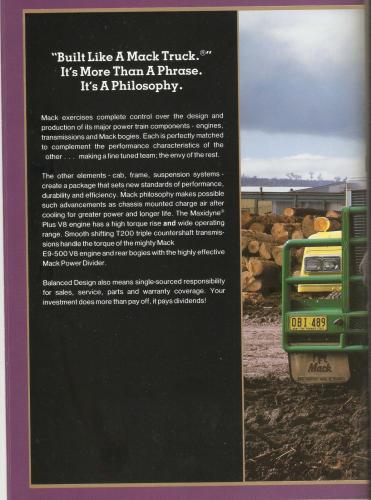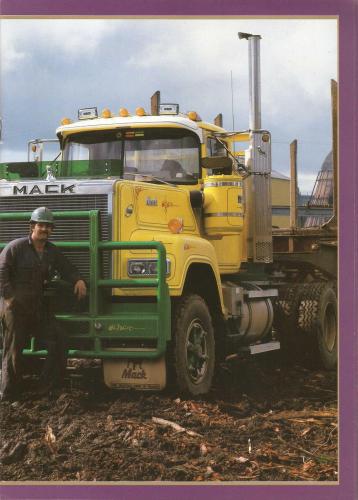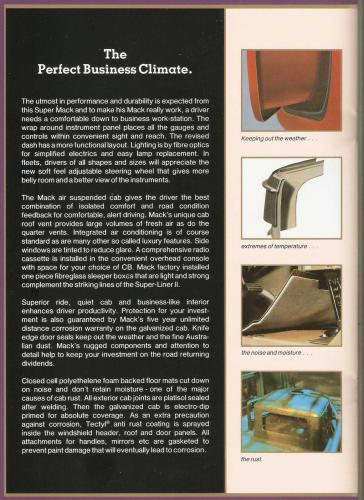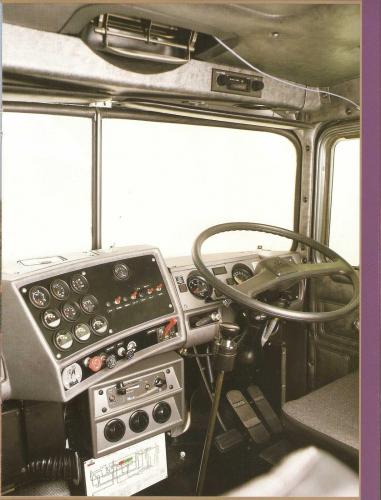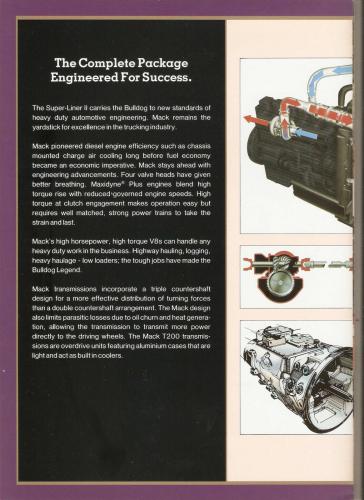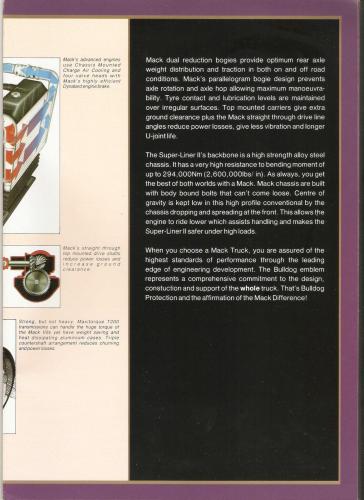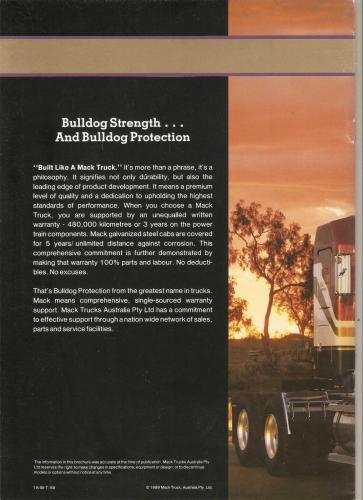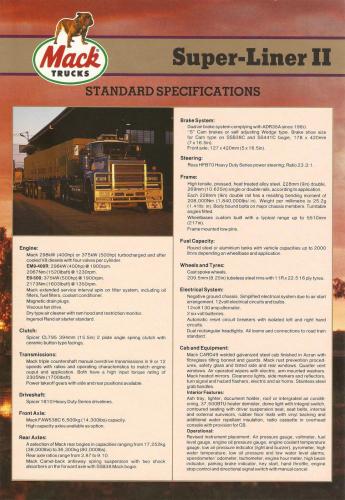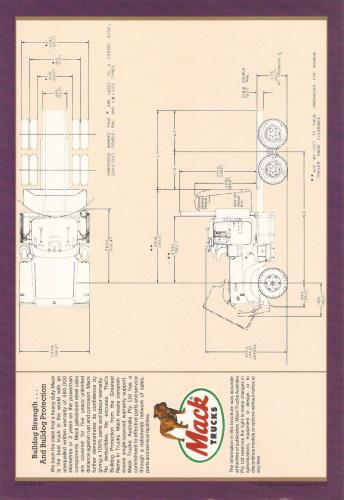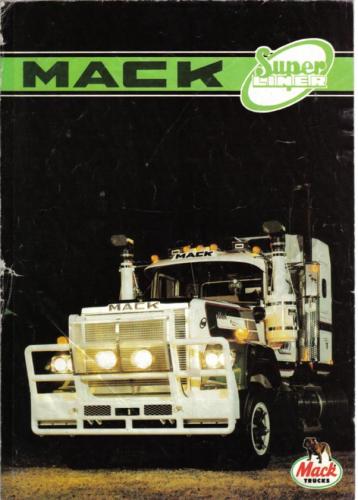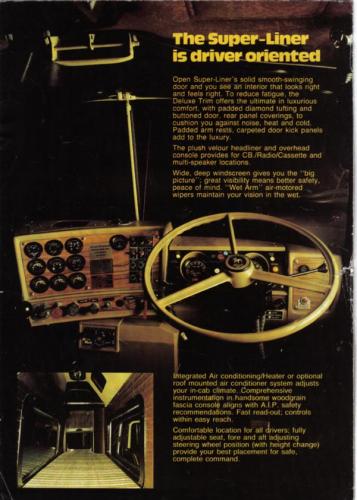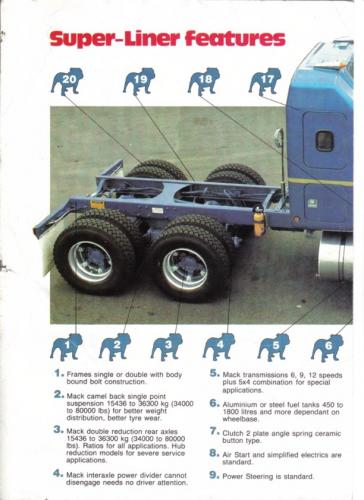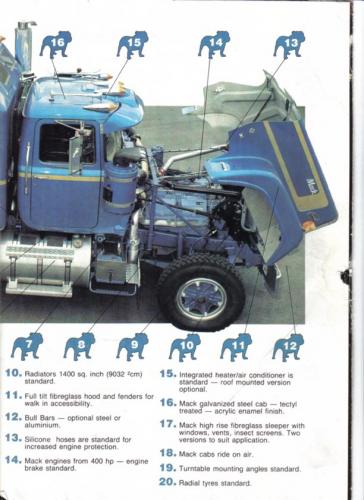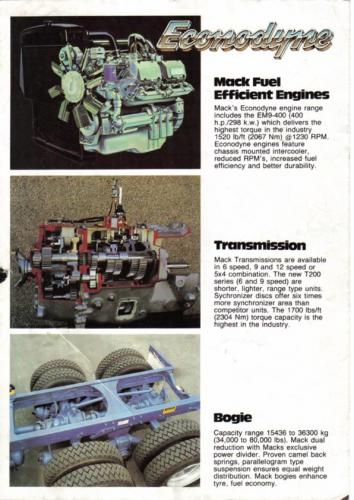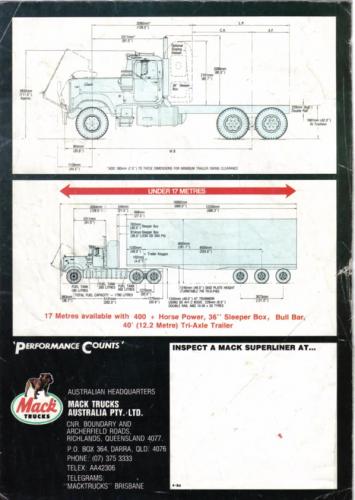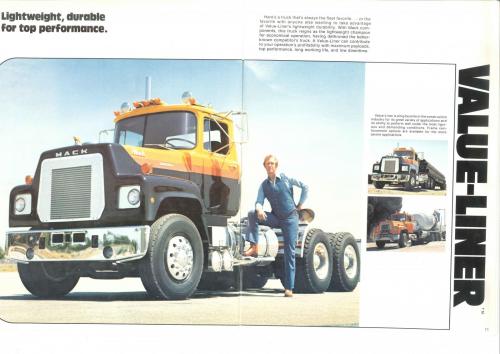-
Posts
242 -
Joined
-
Last visited
-
Days Won
1
Content Type
Profiles
Forums
Gallery
Events
Blogs
BMT Wiki
Collections
Store
Everything posted by Whiskymack
-
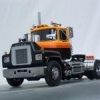
Who designed/styled the Superliner?
Whiskymack replied to sodly's topic in Antique and Classic Mack Trucks General Discussion
I agree with you and Dave. I've never swallowed the missing link theory either. If you really want to see the origins of the Super-Liner you need to look at the Cruise-Liner. The first generation Super-Liner is essentially a Cruise-Liner frame with an R model cab and a new hood. The key feature of this frame was the bolt on drop frame at the front which enabled the mounting of big wide radiators and the high hp motors which needed the cooling. Apart from that, the rest of the frame looks like it was pretty much carried over from the RL/RS models. Fittings such as cab mounts, fuel tanks, battery boxes and their brackets all look the same as those on late production RS/RL models and I believe the frame rail section dimensions were the same. I think this makes the Super-Liner the logical evolution of the Mack Western product line and any similarity with the Brockway designs is largely down to the use of the same cab shell. I guess to find out who designed it you would have to look at who was in key design roles at Hayward in the mid 70's. The second generation Super-Liner was a different beast. It had an entirely different frame which it shared with the earlier MH cabover. I think that Mack Western had ceased to exist by the time it came out so the Super-Liner 2 was an Eastern product. By all accounts, the Mk 2 was a much better truck than it's predecessor but, from a layman's view, I still prefer the look of the original with it's round headlights. -

Chicago R models
Whiskymack replied to Lmackattack's topic in Antique and Classic Mack Trucks General Discussion
Now on Ebay! http://www.ebay.com/itm/1985-Mack-R-/282134834712?forcerrptr=true&hash=item41b08bee18:g:iu0AAOSwV0RXr2kz&item=282134834712 -
Just as Lmackattack says, the grill opening is as wide as the frame rails and the Western radiators sat between the frame rails so were limited to this width. However, these radiators were much taller than the Eastern ones. There were also two options. For 6 cylinder and lower HP models a standard radiator sat on a front crossmember which spanned the spring hangers, but higher HP models such as the 866 V8's, Detroit V12's and high end Cummins were fitted with an even deeper radiator. This was mounted to brackets on the inside of the frame rails and the crossmember was deleted. Some of these trucks also had a different bumper with more cooling cutouts. When the Value liner came out it had a redesigned front crossmember allowing it to take the same tall, narrow radiator that was fitted to some Cruise liners. It couldn't take the wide radiator that was fitted to the high HP Cruise Liner and Super liner because it didn't have a drop front.
-
I'm no expert but The tip turbine engines had the intercooler mounted to the top of the engine on the water manifold and air was forced into it by a small turbine on the back which I believe was driven by exhaust gases. In the brochure above they are the 300 maxidyne and 300 plus engines. Sometime in the early 80's Mack did away with this arrangement and had the intercooler mounted in front of the main radiator. There was no turbine forcing air through it. I think they started calling these engines Econodynes but somebody correct me if I am wrong.
-
That is the Superliner 1 brochure. It was first published in 78 and it must have been updated several times. I have an 80 or 81 copy of the same thing and I've seen one online dated 78. The early copies have the tip turbine engines but late ones have the radiator mounted charge air cooler but most of the other content seems to be the same. Mack Western also put out a brochure in 78 showing the whole Hayward line up ie Super, Cruise and Value liner.
-
Glad to see that the Rubber Duck's mount is in good hands. Is the plan to restore it as it was in the film? I was amazed at how much Dan knew about that movie and he was also very generous in sharing that information. I emailed him on several occasions with obscure questions about the trucks and he always came back with a reply. Perhaps he can write a book someday!
-
What a great topic. The Hayward Macks are my favourites. From what I've seen the RS/RL600 seemed to be a popular choice for mixers. I've seen quite a few on ebay etc. but not so many tractors. I think the G model/Kenworth issue was to do with the cab door design. If you take a close look at the G model door it does look pretty similar to the KW door design and I heard somewhere that KW filed over it. Attaching an interesting period read on the opening of Hayward. mackwestern_20160616123008.pdf
-
That's pretty much the way I understood it. I think the restored truck started out as a replica and when Dan found the 2nd wrecked second unit truck he incorporated parts from it. The yellow one is the original First unit supplied by Mack. Apparently, it was largely original including engine ,frame cab etc. although someone had swapped the camelback for a Pete air leaf set up. It's a great piece of trucking history and a lucky guy who has it now! I didn't know Dan had sold the restored truck as well. I used to follow his site and his posts but he seems to have gone very quiet over the last few years. It's a pity as he has to be the absolute authority on 'Convoy' and its trucks .
-

value liner hood
Whiskymack replied to kevin l y's topic in Antique and Classic Mack Trucks General Discussion
I made a Value Liner from the AMT kit and can supply you with a hood if you don't fancy making your own one. The one I did is vacuum formed but it doesn't have the ridge on the top which came in about 1978 or thereabouts. I added the ridge to the hood later. I did a lot of other bits and pieces too including Western style fuel and air tanks, battery boxes and badging so if you are interested in any of it send me a PM. It's a lot of work because the frame is different too. The Western R's all had deeper section, straight rail frames unlike the tapered and flared Eastern R model frame. You basically need to scratch build a new frame if you want to be faithful to the real thing. -
I came across some photos on the brockwaytrucks.org site showing 360 and 361 restorations in progress. The frame looks just like the Mack R and U frame with the tapered rails which flare out at the front. Some of the crossmembers also look similar. Is this just a co-incidence or were Mack and Brockway sharing frame rails? Sorry, I tried to insert the link to the pages but couldn't get it to work for some reason.
-

Different Superliner hood
Whiskymack replied to Vladislav's topic in Antique and Classic Mack Trucks General Discussion
Vlad, It's great how your eagle eyed spot over the Superliner headlamps has led to new discoveries. I'd always just assumed that Mack Trucks Australia supplied NZ as well and had no idea that the Kiwis built their own. I'd also never heard of fiberglass R model cabs before although I did see one or two fiberglass F models Down Under. The amazing thing about the classic period Macks is the great number of variations. I don't know if any other manufacturer offered so many variants within one model range. Alastair -

Different Superliner hood
Whiskymack replied to Vladislav's topic in Antique and Classic Mack Trucks General Discussion
Came across this link today. It explains all: http://www.renaulttrucks.co.nz/about-us I also found this magazine. Looks interesting but might be a bit pricey with overseas postage! http://www.accuratestories.co.nz/magazines/classic-trucking-volume-ii/ -

Different Superliner hood
Whiskymack replied to Vladislav's topic in Antique and Classic Mack Trucks General Discussion
Vlad, Sadly, I don't think I can manage a trip down under anytime soon. I was there for about a year 1991 to 92 when the trucks were great. Plenty of R models on the roads, even old steel dash R700s and lots of Superliners, Ultraliners, Valueliners and a few Cruiseliners. I think I only saw one CH.I imagine it must be a lot different now. Alastair -

Different Superliner hood
Whiskymack replied to Vladislav's topic in Antique and Classic Mack Trucks General Discussion
Mack Trucks Australia must have really got their money's worth from the R model frame. I think the Valueliner must have been the final development of the R model design down under. I read somewhwere that the Superliners produced in Mexico used the same idea. R model frame and cab with a superliner hood. -

Different Superliner hood
Whiskymack replied to Vladislav's topic in Antique and Classic Mack Trucks General Discussion
So if Macks were being assembled in New Zealand until 2000, perhaps the Kiwi Superliners were all put together there. I wonder where the parts were imported from. Was it the US or Australia or both? My guess is that the NZ Superliner was probably closer to the Australian design than the US one but without getting a look at the frame it's hard to tell. Another interesting link on the topic: http://www.roadtransporthalloffame.co.nz/inductees/2012-inductee-showcase/ron-carpenter.4 -

Different Superliner hood
Whiskymack replied to Vladislav's topic in Antique and Classic Mack Trucks General Discussion
Vlad, Paul is right. The cab on the Australian Super Liner 2 was raised up higher than on the mark 1 version, according to the brochure to keep the cab cooler and quieter, which accounts for the higher ride height seen in some of your pictures. So the headlights were moved down presumably to comply with some regulation. Now, here's my theory! The pictures showing the higher headlamp position all look like New Zealand trucks to me and if you do a google images search for 'Mack Superliner New Zealand' you get mostly lower riding trucks with the higher headlamps but if you search for 'Mack Superliner Australia you get higher riding trucks with lower headlamps. Could it be that, New Zealand having a more temperate climate, it wasn't necessary to raise the cab up for that market so Mack continued to Market the older, lower riding Mark 1 design updated to a Superliner 2 with new square headlight hood and new cab interior package? The headlamps remained in the higher position. Just a thought. Someone somewhere must know a bit about the history of Mack Trucks in Australia and New Zealand. From a visual perspective, I think the lower ride height made for a more handsome truck. To my eyes the Australian Superliner 2 looks a bit ill proportioned. As regards chassis it's my understanding that all the Australian/NZ models of this era used the R series frame unlike US models which had different frames for each model. Australian Superliners were a bit like an R700 with a big radiator and Superliner hood. Superliner 2 brochure attached. Sorry there's so much of it but it's all great stuff. -

Different Superliner hood
Whiskymack replied to Vladislav's topic in Antique and Classic Mack Trucks General Discussion
Hi Vlad, I can see just what you mean. You can also see that the trucks with the headlamps lower down ride a lot higher than those with the higher headlamps. Compare the gap between tyres and fenders and also the gap between diesel tanks and the bottom of the cab-it's much greater on the trucks with lower headlamps. I'm fairly sure that the ride height on Australian RW1's was lower than RW2's but I thought RW1's always had the round headlights. I'm no expert on this but is it possible that they made some RW1's with square headlamps? Presumably the height of the headlamps from the ground was decided by regulations and I suppose the increased ride height was to do with cooling higher horsepower engines. Here's an RW1 brochure. I'll dig out the RW2 one tonight. -
Can anyone tell me when radial tyres for class 8 trucks first came in in the USA? Looks like bias ply were still pretty popular in the 1970's but I wondered if anyone was already using radials then.
-
Can anyone get me a couple of pictures of the cab hinges on an FL or FS Hayward cabover? From what I can make out in photos, they come off the spring hangers but I don't know if they are part of the casting or whether they are an additional bolt on piece. Also, it looks like they are slightly assymetrical-the right hand side one is an inch or two further outboard than the left one. This is going to be one of my future model projects. I've already got most of the frame components done anda half built F model cab. It's just the design of these hinges that will hold me up so any enlightenment would be appreciated.
-

Value-Liner scale model finished.
Whiskymack replied to Whiskymack's topic in Mack Scale Model and Diecast Corner
Thanks for all your help with this. You answered a whole lot of questions which helped enormously with the under the hood detail. I entered it in the annual truck model show over here in June and got a first in the US/Australian truck category. Thanks very much. Regarding the emblem, the truck in the '78 brochure doesn't have it so I left it off. Personally, I think that emblem is a bit fussy and doesn't really go with the Mack script and RS emblems so it suited me to leave it off. If I'm honest I'm not really a fan of the name either. Mack obviously wanted it to fit in with the Cruise-Liner and Super-Liner model range but I prefer the old 'RS/RL600' terminology. That said the trucks looked great!
BigMackTrucks.com
BigMackTrucks.com is a support forum for antique, classic and modern Mack Trucks! The forum is owned and maintained by Watt's Truck Center, Inc. an independent, full service Mack dealer. The forums are not affiliated with Mack Trucks, Inc.
Our Vendors and Advertisers
Thank you for your support!





